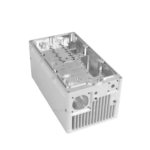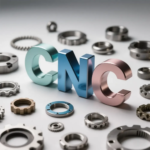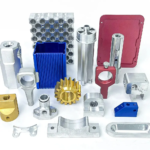Implementing Static NAT and IP Isolation in Your Network Segment: A Comprehensive Guide
As network administrators, we know that keeping our networks secure and segregated is crucial in today’s connected world. One effective way to achieve this is by implementing static NAT (Network Address Translation) and IP isolation in our network segments. In this blog post, we will delve into the concept of static NAT, its benefits, and how to implement it along with IP isolation to create a robust and secure network infrastructure.
What is Static NAT?
Static NAT is a routing technique that allows a single public IP address to be shared among multiple devices on a private network. This is achieved by mapping a public IP address to a private IP address, effectively creating a one-to-one mapping between the two. This technique is useful in scenarios where multiple devices on a private network need to access the internet or communicate with external devices, but the private network doesn’t have a publicly routable IP address.
Benefits of Static NAT
- IP Address Conservation: Static NAT helps conserve IP addresses by allowing multiple devices to share a single, publicly routable IP address.
- Improved Network Security: By isolating traffic between the public and private networks, static NAT can help prevent unauthorized access and reduce the attack surface of the private network.
- Simplified Network Configuration: Static NAT simplifies network configuration by reducing the need for complex routing configurations and protocols.
Implementing Static NAT
To implement static NAT, you will need to follow these steps:
- Choose a Public IP Address: Select a publicly routable IP address that will be used for static NAT.
- Configure the Firewall: Configure the firewall to allow traffic from the public network to reach the private network using the chosen public IP address.
- Define the Mapping: Define a one-to-one mapping between the public IP address and the private IP address of the device(s) that need to access the public network.
- Configure the Routing: Configure the routing table to route traffic from the public network to the private network using the mapped address.
What is IP Isolation?
IP isolation is a security technique that restricts traffic between network segments, ensuring that traffic is only allowed to flow between segments that are explicitly trusted. This is achieved by implementing network access control based on IP address, subnet, or port number.
Benefits of IP Isolation
- Improved Network Segmentation: IP isolation helps to segment the network into smaller, more manageable segments, reducing the attack surface of the network.
- Enhanced Security: By restricting traffic between segments, IP isolation enhances network security by preventing unauthorized access and data leakage.
- Simplified Security Configuration: IP isolation simplifies security configuration by reducing the need for complex firewall rules and access control lists.
Implementing IP Isolation
To implement IP isolation, you will need to follow these steps:
- Segment the Network: Segment the network into smaller, more manageable segments based on organizational or functional requirements.
- Configure Access Control: Configure access control based on IP address, subnet, or port number to restrict traffic between segments.
- Verify and Test: Verify and test the IP isolation configuration to ensure it is working as expected.
Combining Static NAT and IP Isolation
Combining static NAT and IP isolation can create a robust and secure network infrastructure. By implementing static NAT to share a single public IP address among multiple private devices, and then isolating traffic between the public and private networks using IP isolation, you can:
- Conserve IP addresses: Conserve IP addresses by sharing a single public IP address among multiple private devices.
- Improve Network Security: Improve network security by isolating traffic between the public and private networks, reducing the attack surface of the private network.
- Simplify Network Configuration: Simplify network configuration by reducing the need for complex routing configurations and protocols.
In conclusion, implementing static NAT and IP isolation is a powerful way to create a secure and robust network infrastructure. By combining these two techniques, network administrators can conserve IP addresses, improve network security, and simplify network configuration. With this comprehensive guide, you should be well-equipped to implement static NAT and IP isolation in your network segment, ensuring a secure and efficient network infrastructure for your organization.










